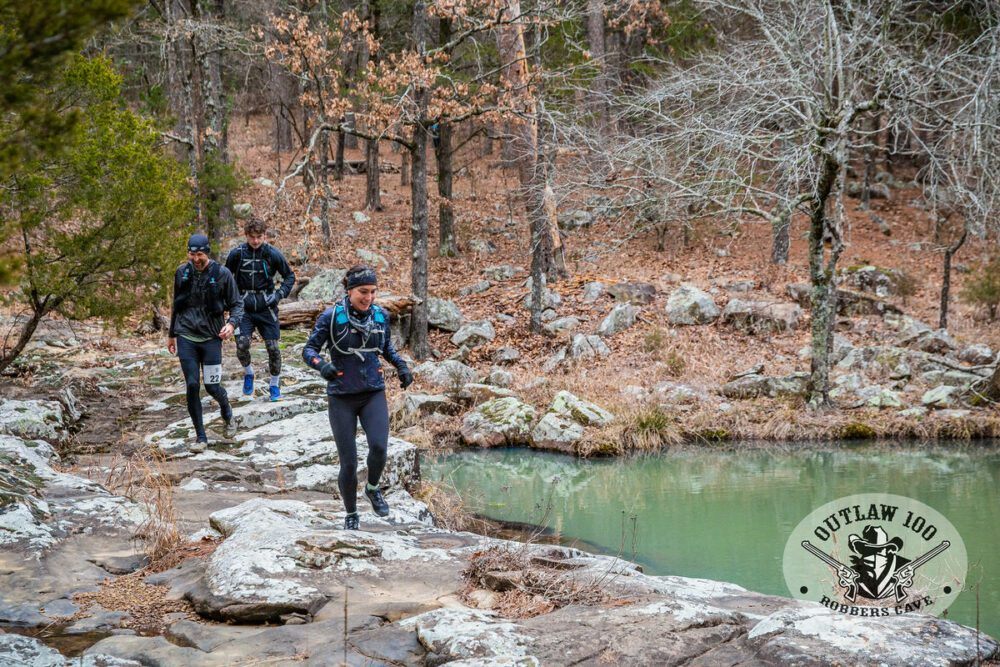After any race or major adventure that I do, I like to think about the things that went well and appreciate them, but even if a race goes really great—as my first 100-miler did—I still like to take some time and think through what could be improved upon for next time. I think it’s super important to acknowledge that even in the smoothest-feeling race, there are probably some takeaways that might help improve the next race even more. So, whether you’re actually considering doing a 100-miler (or you do them already and just want some ‘don’t do this dumb thing that I did!’ thoughts), or you race any other kind of discipline, take a second and look at this list. This race went super smoothly, but I still left it thinking through what we’ll do next time, and I think that’s a great habit to get into. Celebrate the good, acknowledge the weak points. Don’t beat yourself up, but ensure that the next race is even smoother.
Better cold weather clothing
I had a great setup for my daytime running, but when I looked at the forecast and saw it would dip just below freezing at night, I took my phone app at its word and just had a slightly warmer change of clothes ready for the night laps. What I didn’t take into account was if the temps dropped more than they were set to—they did!—and if the wind picked up and added a chill—it did!—and just how hard my body would be working to stay warm in any kind of cold weather—very hard! What ended up happening was one shaky, frozen lap with numb fingers, then a final lap with a puffy coat that was definitely not the best tool for the job. In short: Smarter clothing choices with the (real) forecast in mind. (Note: I obviously have plenty of cold-weather gear. And I even had it with me, but it was tucked away in a duffel, whereas the puffy coat was in the front seat of the van, and an easier thing to grab. It turns out, once you’re frozen and completely exhausted, you DO NOT want to stop, you just want to keep moving so that you don’t dramatically collapse.)
Knowing how my body will change over race
The puffy coat wasn’t just a problem because of fit and racy-ness, it was a problem because having that plus a raincoat that usually fits perfect but snug both under a hydration pack that’s very sturdy meant that my last lap was very, very hiccupy and indigestion-y, which made getting up to any kind of run speed incredibly uncomfortable. We were still jogging and speed hiking, but if I had been kitted out differently, I suspect that I could have shaved 15 minutes off of my time on the last 7 miles. Bloating is a very real concern in these races, and being better prepared for it with my clothing is going to be key for next time.
Pre-taping toes
This is a tough one that I should have figured out ahead of time. I know where my toes tend to blister, but I decided to wait them out and tape later, rather than taping at the start. Looking back, I should have taped my big toes before the start, because if I could have saved even a bit of blistering, it would have made a big difference to my comfort. I don’t think it hindered my speed by much, but blisters suck.
More night running ahead of time
I don’t do a lot of trail runs in the dark. That’s just not a thing that I do. Luckily, I wasn’t nervous or terrified in the dark (thankfully), but I do think night runs or pre-dawn runs on trails to practice with the headlamp would have benefitted me. Specifically, trail running in the dark on twisty, rocky trails would have been good for this race, since there were very few spots where you were on doubletrack running straight. I’d say my night running is decent, but definitely has room for improvement!
Making sure everyone knew how to work the equipment
This was a very, very minor moment, but heading into the last lap as I tried to clip my pack on over my puffy, I was struggling with numb fingers and Peter was trying to do up the pack for me, but didn’t know how the clips worked. If you’ve ever tried to explain a complicated snapping system to someone after you’ve both been up for more than 24 hours and you’re 93 miles into a race… it does not go super well. We got it, but again, these small time sucks add up.
Another good headlamp
I tried to get a second headlamp exactly the same as the one I have and love, but I couldn’t find one at the last minute and I was kicking myself. We had other headlamps, but the one I had to switch to paled in comparison (literally, hehehe) to the Fenix one that I was using before. Now, it’s hard to stomach buying two headlamps instead of one, but then again, since Peter and I both could stand to have good headlamps, it’s not such a farfetched idea that we would have two high-quality ones. Skimping on the gear that’s really going to make a difference just doesn’t seem smart.
Better van prep
Admittedly, this is a very ‘if we had known then what we know now’ situation, but we didn’t bring a ton of blankets or sleeping pads because we tried to pack light for the 8 weeks we were gone. But if I was going to do it again, I would have made sure that Peter and DW had a sleeping pad plus another blanket or two, or at least some warmer clothing, to get through a chilly, long night. They did fine, but when your crew is sitting around waiting for you for hours at a time, it’s nice knowing they’re covered.
Rain gear / plans for the worst
We would have been screwed if it had rained. I admit, I don’t know what the solution here would have been, since bringing our 10×10 tent would have been a huge space-suck in the van for the rest of the trip. So it’s hard to say what the right thing to do there would have been, but we definitely would have been in trouble if the weather hadn’t been decent. I had the stuff I needed to run in any kind of weather (though clearly didn’t think through what would be good to have laid out for cold weather, as per above) but the crew setup was fair weather only.
More risk
This is definitely not one I’m beating myself up over, since I had absolutely no idea what to expect from this race. I tried to always stay within my comfort zone in terms of my perceived exertion, and I think I kept it together pretty well. But the next time I do a race like this—or a shorter one—I want to remember the feeling of having done and finished this hard thing, then push myself outside of that comfort zone, even if that means the race doesn’t go well because I went too hard at some point. In this race, I knew finishing and finishing strong was the goal, and mission accomplished. But next time, I want to add just a little element of risk, the ‘just send it’ attitude, and see where it gets me. I know that doesn’t always work, but it’s a risk that I now feel more comfortable taking.
Before you go, check out our book, Becoming A Consummate Athlete, right here:






